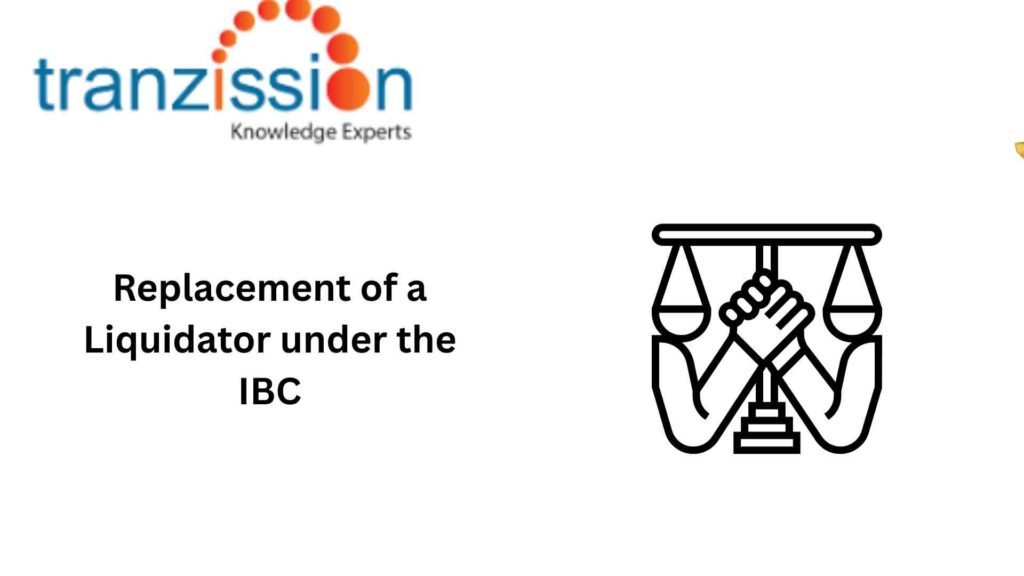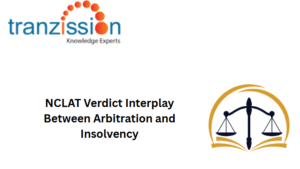
Replacement of a Liquidator under the IBC

Table of Contents
As per the Insolvency and Bankruptcy Board of India (Liquidation Process) (Second Amendment) Regulations, 2016, the IBBI introduced an amendment which allowed the Stakeholders’ Consultation Committee (SCC) to propose the Replacement of a Liquidator and file an application with the Adjudicating Authority, the National Company Law Tribunal (NCLT).
Legal Framework for Liquidator Replacement Under IBC
The replacement of a liquidator during the liquidation proceedings is governed by:
Insolvency and Bankruptcy Code, 2016:
While the IBC does not explicitly mention a provision for replacing a liquidator, the NCLT potentially exercises its inherent powers or considers grounds akin to those in the Companies Act, 2014 to remove or replace a liquidator. For instance, section 34(4) allows the NCLT to remove a liquidator and appoint another if required. The NCLT can, thus, order the removal and replacement of a liquidator in exceptional cases.
Insolvency and Bankruptcy Board of India (Liquidation Process) Regulations, 2016:
Regulations 39D and 40 provide for the Committee of Creditors (CoC) or the SCC to recommend a liquidator’s replacement. The SCC plays an advisory role in the liquidation process. As per recent amendments, the SCC is allowed to recommend a replacement liquidator and however, questions arise on whether this provision is ultra vires to IBC, as the final decision rests with the NCLT.
Read more: Relationship between insolvency law and credit ratings
Grounds for Replacing a Liquidator
The grounds for replacing the liquidator have been listed under the Liquidation Regulations:
Conflict of Interest or Bias:
If the liquidator has prior associations with the corporate debtor or creditors, it raises concerns of partiality. There have also be cases where liquidators favor specific stakeholders over others.
Inefficiency or Non-Performance:
The failure to expedite asset realization and non-compliance with statutory timelines causes procedural requirements and lack of proper communication with creditors and stakeholders. Thereby, complicating the procedure for the parties involved, the liquidators managing the cases, and the Adjudicating Authority hearing liquidation cases.
Loss of Confidence by Stakeholders:
Due to the statutory or procedural issues, creditors may lose trust in the liquidator’s ability to handle the case fairly. To address this, the SCC may recommend a change due to dissatisfaction with the liquidator’s approach.
Fraud, Misconduct, or Professional Misconduct:
A liquidator found indulging in malpractice, unauthorized asset disposal, or concealment of information, which may require the IBBI’s or NCLT’s intervention to safeguard stakeholder interests.
Read more: Chapter 7 vs. Chapter 11: What’s the Difference?
Process of Liquidator Replacement
Recommendation by SCC:
The SCC, which functions as the CoC during liquidation, proposes the replacement of the liquidator, along with the reasons, with a 66% majority vote, to the NCLT.
NCLT’s Role in Approving Replacement:
The NCLT examines the reasons for removal and evaluates the alternative candidates proposed. If justified, the NCLT appoints a new liquidator, ensuring a smooth transition.
Appointment of a New Liquidator:
The new liquidator takes charge and is expected to complete the liquidation efficiently. Creditors and stakeholders must be notified about the transition to ensure the liquidation is transparent and fair.
Challenges and Controversies Surrounding Liquidator Replacement
The legal hindrances on liquidator replacement can be summarised as under:
Debate on SCC’s Role – Is It Ultra Vires to IBC?
Critics argue that IBC does not grant SCC binding powers over the liquidator. However, recent IBBI regulations allow SCC to recommend a replacement, raising concerns about whether this undermines the liquidator’s independence.
Risk of Frequent Changes Disrupting Liquidation:
The frequent removal of liquidators delays asset realization and increases costs, and disrupts stakeholder confidence in the process.
Legal Uncertainty and NCLT’s Discretionary Power:
Courts and tribunals have differing views on when replacement should be permitted, and some NCLT orders have upheld the SCC’s recommendations, while others have rejected them.
Delayed Approvals by NCLT:
The NCLT backlog causes delays in hearing and approving liquidator replacement cases, and stakeholders face financial losses due to extended liquidation timelines.
Judicial Precedents and Case Law on Liquidator Replacement
The decision of Subrata Maity v. Mr. Amit C. Poddar & Ors. established that the Adjudicating Authority can invoke its inherent powers to replace the liquidator under the IBC to ensure the smooth and efficient functioning of the liquidation process, even in the absence of specific provisions. The NCLT has upheld SCC recommendations where liquidators were inefficient or biased, and the NCLT has stressed that creditors’ confidence in the process is crucial. Some tribunals ruled that liquidators cannot be changed solely based on stakeholder dissatisfaction, and courts have emphasized the independence of liquidators in carrying out their duties.
Best Practices for Insolvency Professionals in Liquidation Cases
Liquidators should maintain open communication with creditors and stakeholders and regular updates on asset realization and fund distribution.
Insolvency professionals should ensure adherence to all statutory timelines under IBC and Liquidation Regulations to avoid grounds for removal and proper record-keeping and disclosures in case of scrutiny.
Insolvency professionals need to address creditors’ concerns proactively and avoid favoritism, thereby ensuring impartiality in decision-making.
Conclusion
It can be concluded that the replacement of a liquidator is a sensitive issue under the IBC. While the SCC can recommend changes, the final authority lies with NCLT, and liquidators must uphold transparency, efficiency, and compliance to avoid replacement risks. The IBBI can introduce future amendments to address the legal and procedural issues, and judicial interpretations will shape the evolving landscape of liquidator replacement in India.





